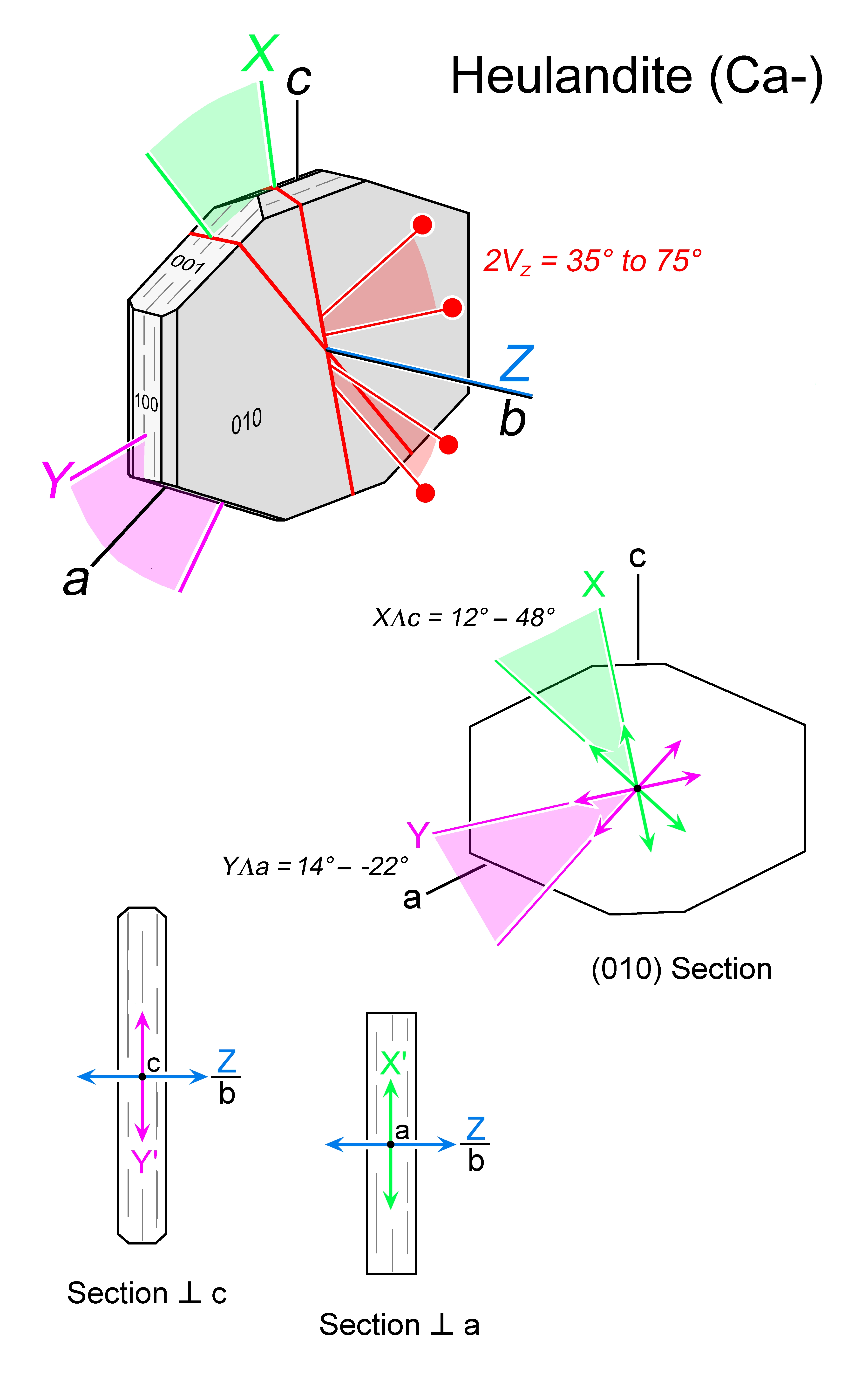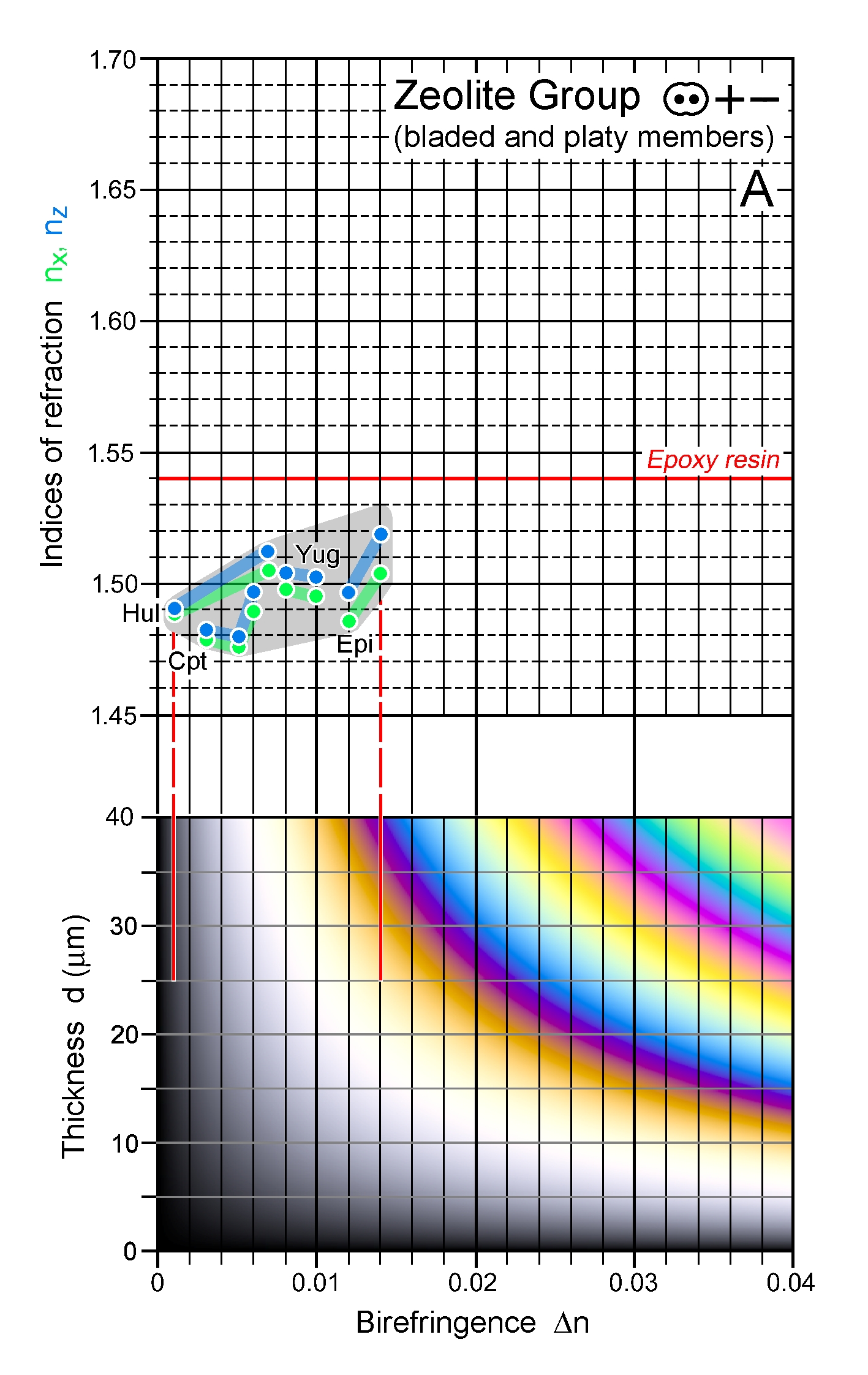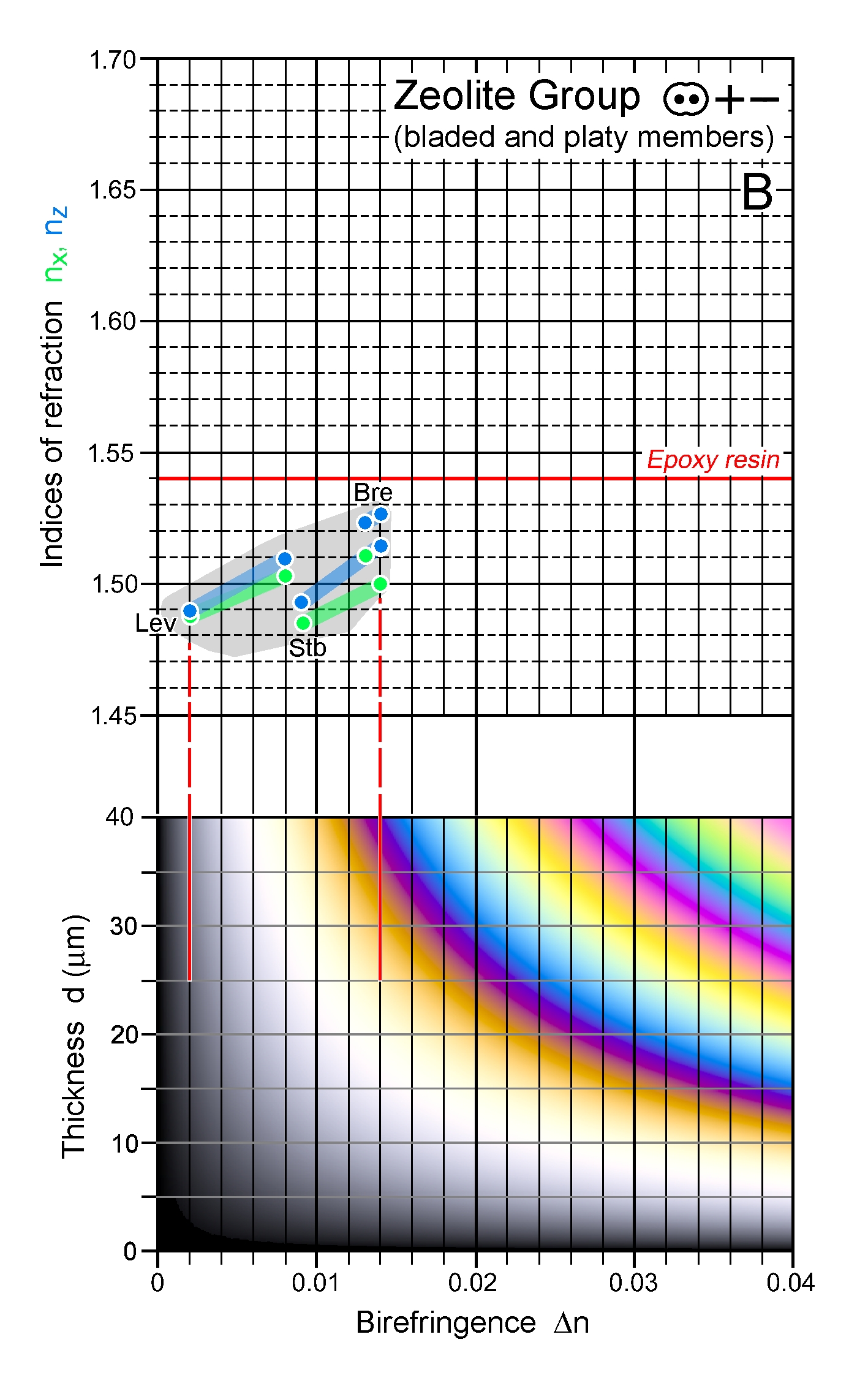|
| Formula | (Ca0.5,Sr0.5,Ba0.5,Mg0.5,Na,K)9Al9Si27O72 ∙ 24H2O |
| | Optic class & sign | Biaxial positive |
| | Optical orientation | X near c, Y near a, Z = b |
| | Optical plane | Optic plane ⊥ (010) |
| | Relief | Moderate- to low-negative |
| | Refractive indices | nx = 1.487 -1.505
|
|
ny = 1.487 -1.506
|
|
nz = 1.488 -1.512
|
|
| n decreases with NaSi substituting for CaAl |
| | Birefringence (max.) | 0.001 - 0.007 |
| | | |
| | Optic Angle
| 2Vx
|
| | 2Vz
= 35 - 75°; inconsistent values reported in literature (to 2V = 0) |
| | Sign of elongation | Length-fast, l (-) in elongate sections of platy crystals |
| | Interference figure | |
| | Colour / pleochroism | Colourless |
| | Zoning | - |
|
|
| Form | Habit | Tabular, granular |
| | | Surface | |
| | Cleavage | {010} |
| | Twinning | Contact twins on {100} |
| | Extinction | Straight in sections ⊥ (010); inclined in sections at a low angle to (010) |
|
|
| Reaction textures | |
| | Alteration / decomposition | |
|
|
| Occurence | Ign | |
| | | Met | Sediments incl pyroclastics at lowest-grade burial metamorphism, also from devitrification |
| | | Sed | Diagenetic in submarine sediments, lake deposits |
| | | Hyd | Cavities and veins in basalt, andesite and rhyolite |
| | | Other | |
|
|
| Distinctive properties | Common zeolite. Very low n, very low to low Δn. Heulandite and clinoptilolite are difficult to distinguish from each other, but heulandite has commonly higher refractive indices. |
| | Additional comments | Heating during preparation may change the optical properties of the more Si-rich members of the heulandite series to length-slow.
n-Δn charts A, B: Bre - brewsterite, Cpt - clinoptilolite, Epi - epistilbite, Hul - heulandite,
Lev - levyne, Stb - stilbite, Yug - yugawaralite |
|
|

 Images
Images 



 Images
Images 

